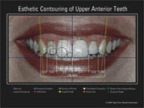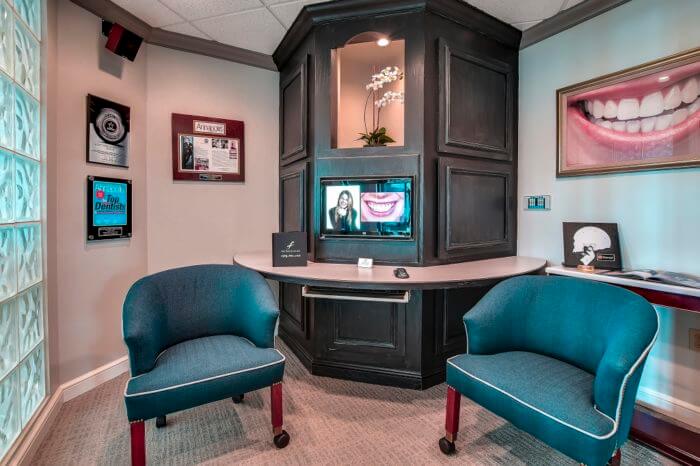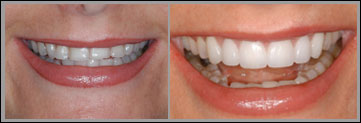Smile Design is the result of a synergy of talents by the dentist who brings together an understanding of the engineering required for a healthy and durable smile, the currently accepted parameters of aesthetics, and most importantly the desires of the patient.
 It all begins with excellent communication between the dentist, the dental team, and the patient. In our practice, it starts with an initial consultation and a complete exam. Listening to what the patient desires determines what treatment may or may not be rendered. Does the patient want a dazzling Hollywood white smile or a more natural appearance? Do they want a youthful appearance or a more age-appropriate look? Do they want their teeth longer, shorter, or straighter?
It all begins with excellent communication between the dentist, the dental team, and the patient. In our practice, it starts with an initial consultation and a complete exam. Listening to what the patient desires determines what treatment may or may not be rendered. Does the patient want a dazzling Hollywood white smile or a more natural appearance? Do they want a youthful appearance or a more age-appropriate look? Do they want their teeth longer, shorter, or straighter?
There may be goals that the patient dreams of that may not be possible, and it is critical to understand the limitations of treatment before treatment is started. It is very helpful for patients to view actual before and after cases completed by Dr. Finlay’s team and that patient’s comments on how it has positively affected their lives.

A complete exam for a smile design will involve digital radiographs and photographs, a dental exam, a periodontal exam, an occlusal exam including the T-scan, and diagnostic models that are indexed and mounted on an articulator: a hinge that replicates how the jaw moves.

From this information, Dr. Finlay and his team can begin to discover what the possibilities will be for your new smile. Beginning with the photographs, the positions of the teeth can be evaluated. If the picture we are trying to paint is a beautiful smile, then the curtain to that stage is the lips.
How much do the teeth show when the lips are at rest? How much do they show at a full smile? What is the position of the teeth relative to the lips? Do they stick out too far, or are they tucked in too much? Once the lips are separated, the frame to the teeth is the gums. Is the periodontal architecture balanced? Are there black triangles? Are the proportions of the teeth appropriate? These questions and evaluations begin to create a list of changes that aid in the design process.
 In this age of computerized technology, the next step may be to accomplish these changes, virtually, with digital photographs and simulation or imaging on the computer. This is our first glimpse of what the potential of an individual’s smile may be. Although this is an effective start, the limitation of cosmetic imaging on the computer is that it represents only a 2-dimensional image of a 3-dimensional functioning system.
In this age of computerized technology, the next step may be to accomplish these changes, virtually, with digital photographs and simulation or imaging on the computer. This is our first glimpse of what the potential of an individual’s smile may be. Although this is an effective start, the limitation of cosmetic imaging on the computer is that it represents only a 2-dimensional image of a 3-dimensional functioning system.
The next step, therefore, is to begin to make these same changes on a duplicate set of mounted models in wax. These 3-dimensional prototypes will allow Dr. Finlay and his team to see how these changes will actually function in the mouth. This becomes our architectural template to outline how treatment will proceed.
Now a predictable plan is designed, and both Dr. Finlay’s team and the patient can have a vision of what the intended results will be before any treatment is started. Although additional modifications will be necessary as treatment begins, durable, predictable care must start with a well-designed plan.
